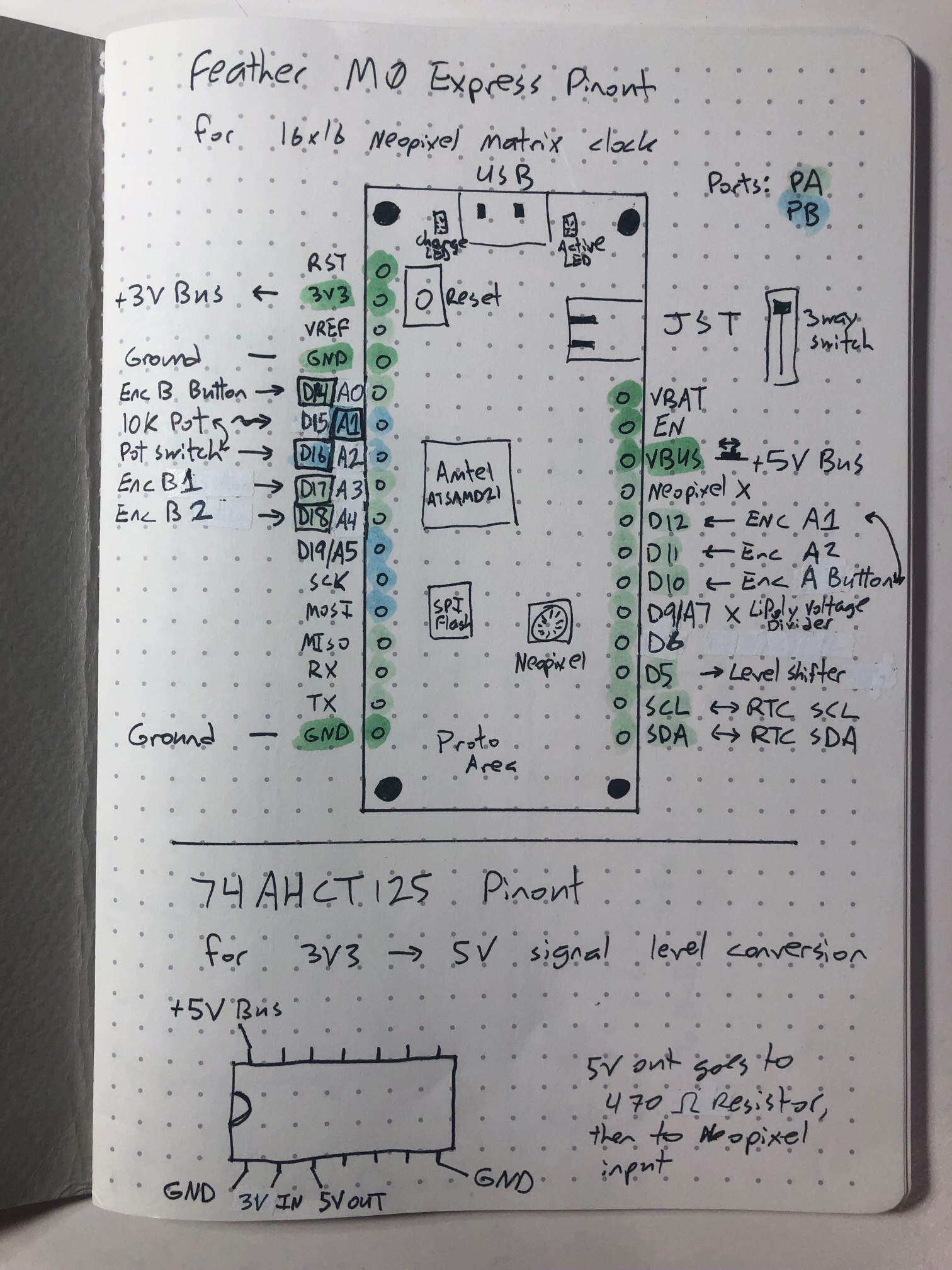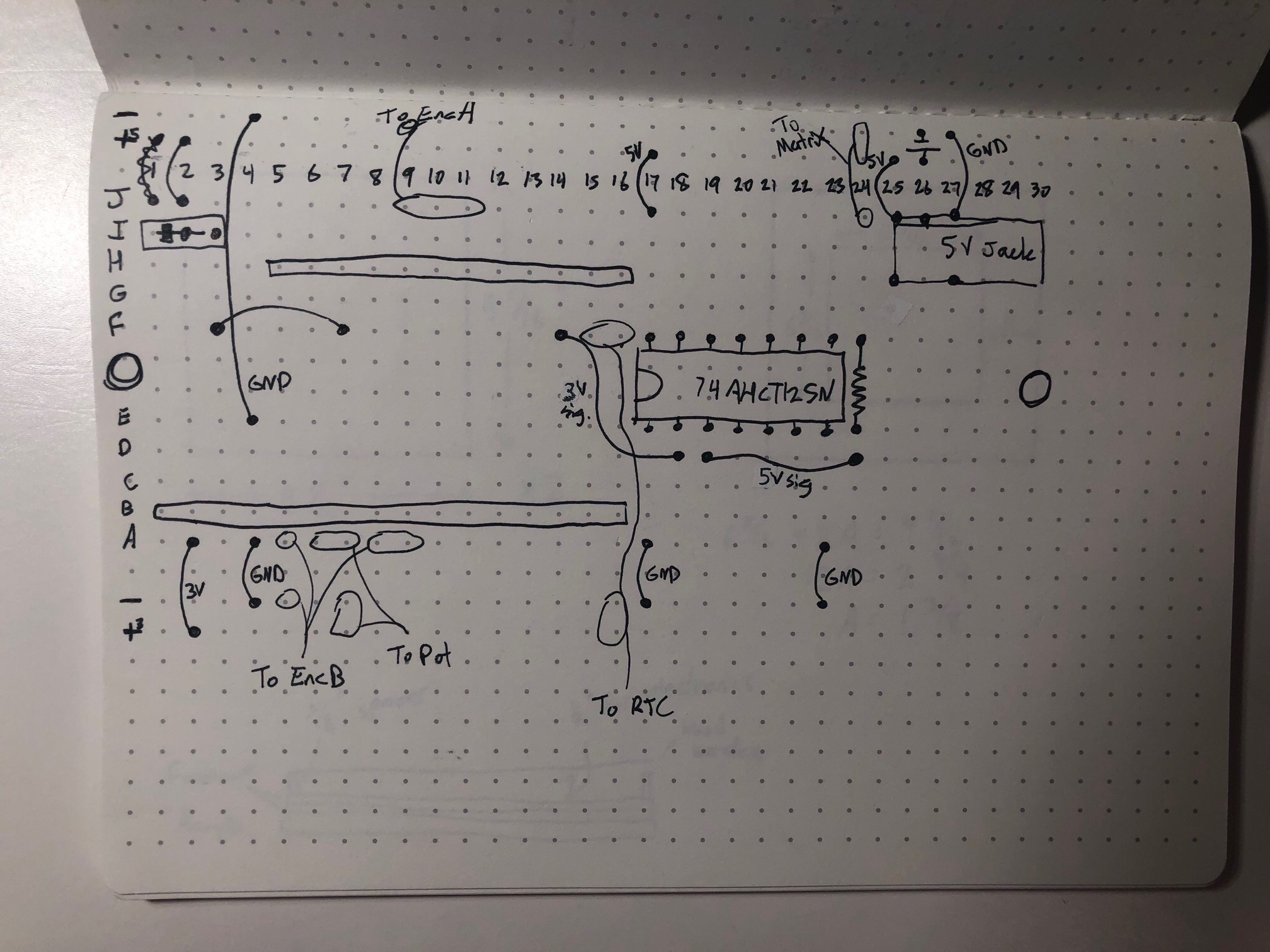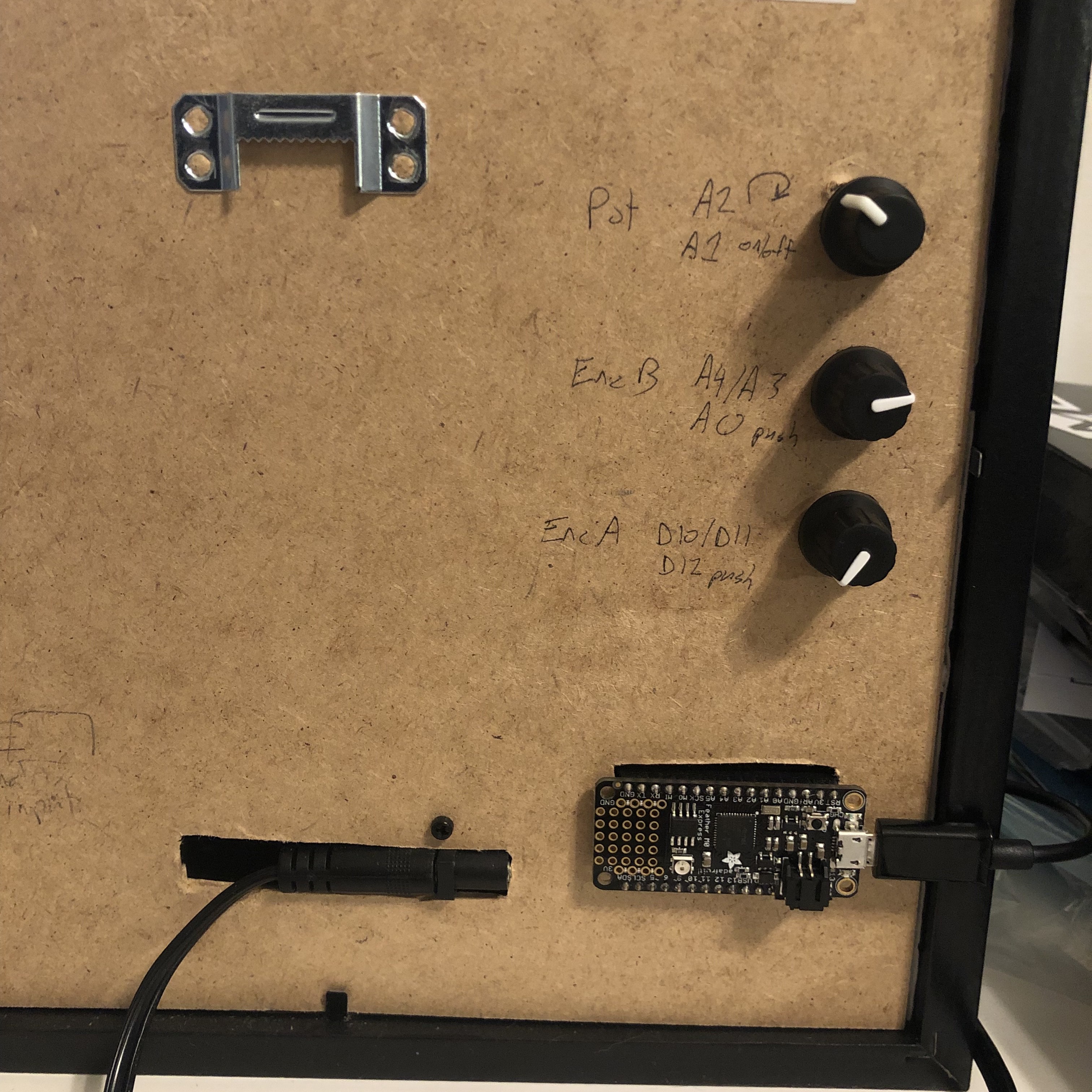I started by buying a Feather M0 Express from Adafruit when it was brand new, enticed by the then new-ish CircuitPython because I knew a little Python from a college. The feather sat around for almost 6 months while I researched components, read Adafruit's NeoPixel guideguide cover to cover (as it were), and thought about the design of the display. As it turns out, if I had waited to buy the micro controller I could have saved a lot of work by buying an ItsyBitsy M0 Express with a 5V digital output made to control NeoPixels...
I bought the 16x16 WS2812B (NeoPixel) matrix from ALITOVE on Amazon, and the rest of the components from Adafruit. The frame came from Ikea, and I bought two kinds of gray acrylic from TAP Plastics. The first kind I tried was a transparent 36% gray, but the clear transparency wasn't the look I had in mind and I wasn't able to diffuse the NeoPixels well after trying a few kinds of paper. Then I bought a black LED acrylic sheet that has a polished side and a matte side that diffuses the light from the NeoPixels nicely. This was the acrylic I used to improve the contrast on my small desk clock project.
In the spirit of "measure twice, cut once," I sketched the Feather M0 Express' pinout and laid out my own FeatherWing on a Perma-Proto Breadboard PCB.



(please ignore the spaghetti wiring, this was my first electronics project... for something more aesthetically pleasing, see here)
The controls for the clock are a pair of rotary encoders, a potentiometer with built in switch, and a SPST switch. The encoders have probably been more trouble than they're worth - I never figured out if it's possible to use interrupts for the encoders alongside Adafruit's DMA Neopixel library, so they're unreliable. The SPST switch is used to cut off the external 5V power supply from the Feather when it's being programmed via USB, to avoid potentially back powering the computer. Having the physical controls were extremely useful when programming the clock, making adjustments to colors, timing, and other values easy to see visually before hard coding some of the parameters.

Time is kept by an PCF8523 RTC and the 3V logic from the Feather is level shifted to the 5V the NeoPixels need by a 74AHCT125 level shifter.
Discussions
Become a Hackaday.io Member
Create an account to leave a comment. Already have an account? Log In.